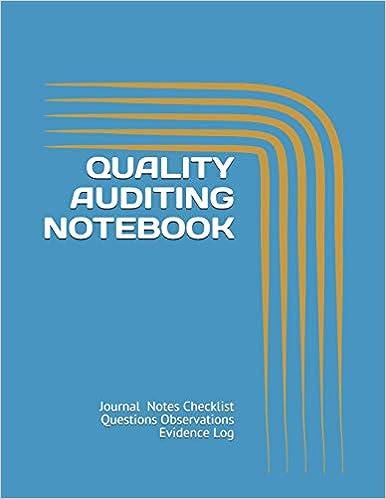Question
On December 31, 2023, James Corp. exchanged 10,000 shares of its $5 par value common stock for all the outstanding shares of Tom Co. James's
On December 31, 2023, James Corp. exchanged 10,000 shares of its $5 par value common stock for all the outstanding shares of Tom Co. James's stock on that date has a fair value of $60 per share. Following the transaction, the two companies retained their separate legal identities and James Corp. prepared a consolidation worksheet as of December 31, 2023, after the acquisition transaction was completed. Below is the last column of this consolidated worksheet (i.e., the one including the consolidated totals).
The amounts in brackets are credited not negative.
Accounts
Consolidated totals
Income Statement
Sales
(360,000)
Expenses
254,000
Net Income
(106,000)
Statement of Retained Earnings
R/E, 1/1/23
(480,000)
Net Income
(106,000)
Dividends declared
36,000
R/E, 12/31/23
$
(550,000)
Balance Sheet
Current assets
466,000
Investment in Tom Co.
0
Land
324,000
Buildings (net)
816,000
Goodwill
72,000
Total Assets
$
1,678,000
Liabilities
(240,000)
Common stock
(292,000)
Additional paid-in capital
(596,000)
R/E, 12/31/23
(550,000)
Total Liabilities & Stockholders' Equity
$
(1,678,000)
Required. Using the information provided in the "Consolidated totals" column above, provide an answer to the following questions:
1) Assume there are no acquisition-related expenses. Based on the information given in the problem, can you calculate the Shareholders' Equity (SE) in the individual financial statements of the parent company (James Corp.) on December 31, 2023, right before the acquisition took place? Explain why or why not. Show your calculations, if any, for each component of SE (i.e., Common Stock, Additional Paid-in Capital, and Retained Earnings)
2) Assume there are no acquisition-related expenses. Based on the information given in the problem, can you calculate the SE in the individual financial statements of the subsidiary company (Tom Co.) at December 31, 2023 right before the acquisition was completed? Please, explain why or why not. Show your calculations, if any, for each component of SE (i.e., Common Stock, Additional Paid-in Capital, and Retained Earnings).
3) Now assume that at the time of acquisition, James Corp. paid $10,000 to attorneys and accountants who assisted in creating this combination and incurred $ 5,000 in issuance costs for the stock used in the acquisition.
a) Show the journal entry (s) to record these costs.
b) Will the answer to questions (1) & question (2) above change because of the additional acquisition-related costs being incurred and by how much? Please, explain your answer. Show your calculations, if any, for each component of SE.
c) The consolidation process will be completed at the end of every future reporting period, using a consolidation worksheet. Do you expect that the costs incurred at the time of acquisition will affect the consolidation entries going forward (for example for fiscal years 2024 and beyond)? Why or why not?
Step by Step Solution
There are 3 Steps involved in it
Step: 1

Get Instant Access to Expert-Tailored Solutions
See step-by-step solutions with expert insights and AI powered tools for academic success
Step: 2

Step: 3

Ace Your Homework with AI
Get the answers you need in no time with our AI-driven, step-by-step assistance
Get Started


